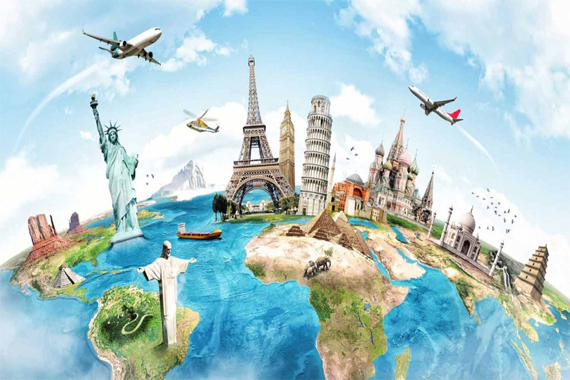A Kaleidoscope of Experiences: Tourism in India
India, a land whispered in ancient sagas and painted in vibrant hues, has captivated travelers for millennia. From the snow-kissed peaks of the Himalayas to the sun-drenched beaches of Goa, the country presents a kaleidoscope of experiences that cater to every traveler’s heart. This essay delves into the diverse threads woven into the tapestry of Indian tourism, exploring its captivating attractions, its economic impact, and the challenges it navigates on its path forward.
A Land of Mesmerizing Delights:
India’s tourism tapestry boasts vibrant threads of cultural, natural, and spiritual wonders.
-
Cultural Tapestry: The country resonates with the pulsating rhythm of diverse cultures, languages, and religions. Majestic temples stand as testaments to artistic prowess, while bustling bazaars offer a sensory feast. Festivals like Holi and Diwali explode with vibrant colors and joyous revelry, painting a picture of India’s unique spirit. The Taj Mahal, an ode to love etched in marble, stands as a timeless symbol of architectural brilliance.
-
Natural Splendor: From the emerald hills of Kerala to the sun-baked expanse of the Thar Desert, India’s natural beauty takes your breath away. The Himalayas beckon adventure seekers with their snow-clad peaks and trekking trails, while the sun-kissed beaches of Goa offer a serene escape.
-
Spiritual Sanctuaries: For those seeking inner peace, India is a haven for diverse faiths. The holy city of Varanasi on the Ganges River hums with the chants of pilgrims, while the serene Buddhist monasteries in Ladakh offer a tranquil respite. The vibrant Sikh shrines in Punjab add another layer to the nation’s spiritual tapestry.
-
Adventure Playground: For those craving adrenaline, India is a thrilling playground. The Ganges beckons white-water rafters, while the Himalayas entice paragliders with breathtaking vistas. From desert safaris to mountain biking, the diverse terrain caters to every thrill-seeker’s desire.

Economic Boon:
Tourism plays a pivotal role in India’s economic fabric, contributing significantly to the GDP and generating employment opportunities. It fosters the development of infrastructure, including hotels, transportation networks, and communication systems. The hospitality industry thrives on tourism, creating jobs in hotels, restaurants, and travel agencies. Additionally, tourism boosts the sale of handicrafts, souvenirs, and local products, empowering artisans and entrepreneurs.
Challenges and the Road Ahead:
Despite its immense potential, the Indian tourism industry faces challenges. Inadequate infrastructure, particularly in rural areas, and concerns regarding hygiene and sanitation require attention. Embracing sustainable practices is crucial to ensure the preservation of India’s natural and cultural heritage while ensuring economic benefits for local communities. Promoting responsible tourism that minimizes environmental impact and respects local customs is paramount.
Conclusion:
India’s tourism sector holds immense promise for the future. By addressing existing challenges and capitalizing on its diverse offerings, India can further strengthen its position as a global tourist destination. By embracing sustainability and responsible tourism, India can ensure that its kaleidoscope of experiences continues to enthrall and captivate travelers for generations to come.
This revised essay provides the same information as the previous one but without images. I hope this is helpful!
